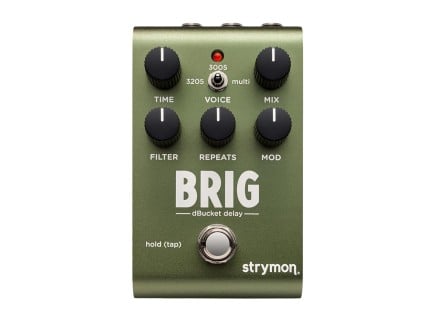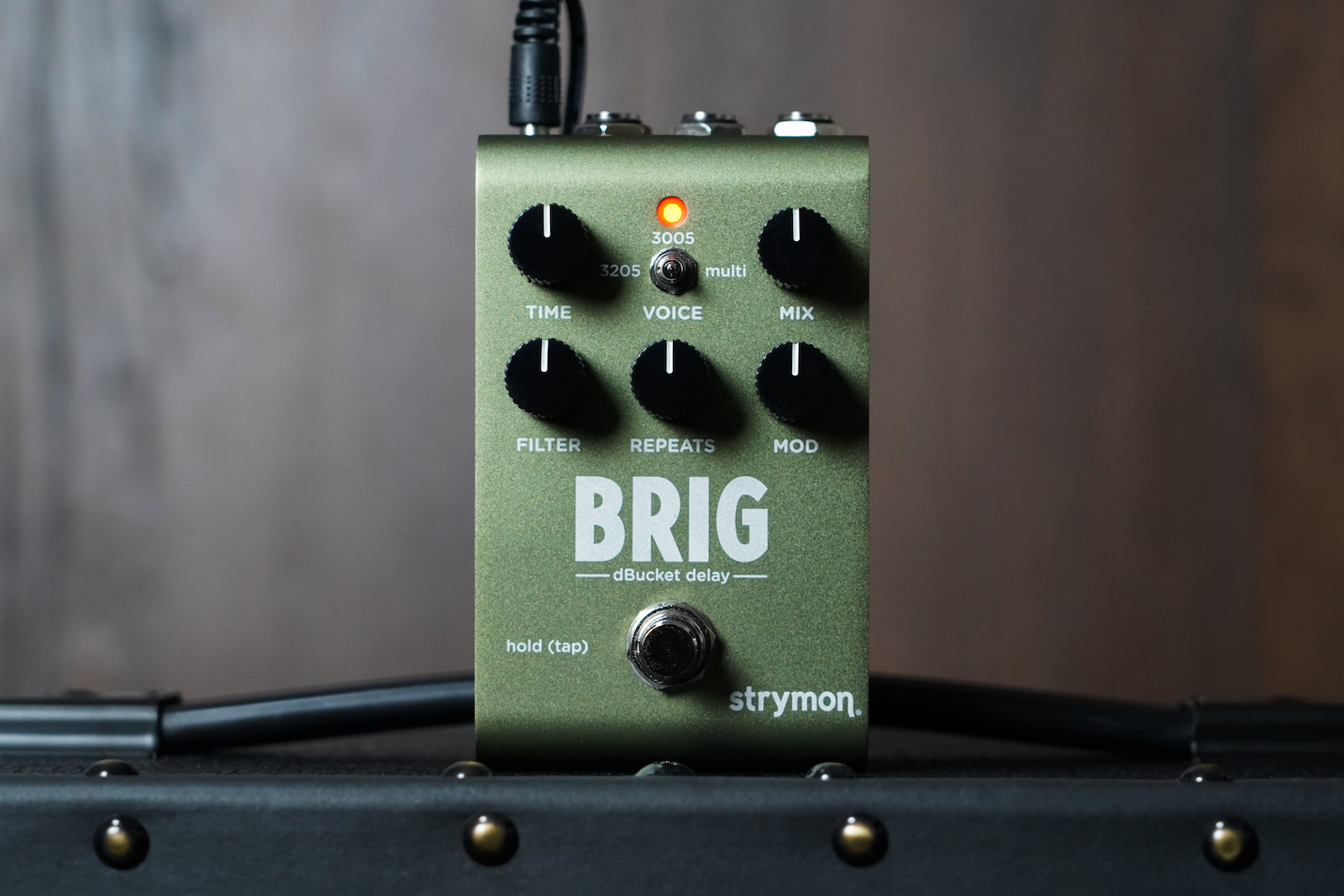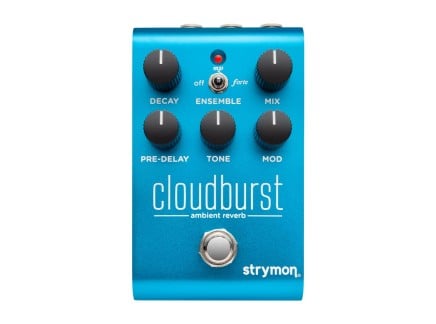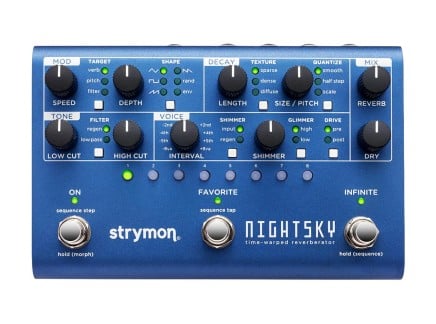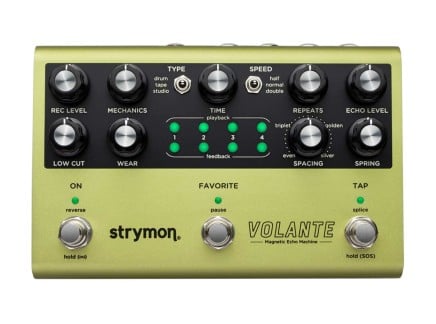Strymon has introduced an all-new delay pedal: the Brig dBucket delay. Like their recent Cloudburst Ambient Reverb, Brig makes use of a more compact hardware platform than any prior Strymon releases. And again, like Cloudburst, it offers a streamlined set of controls—getting you straight to the most important parameters for sculpting rich, deep delay tones.
So, we know that Brig is a delay...but what exactly is it like? Well, the hint is in the name: Brig is designed to emulate the sound of classic bucket brigade-style delays. Like their prior design, Brigadier, Brig uses "dBucket" technology—Strymon's proprietary DSP-based approach to recreating the sound and behavior of classic BBD-style delays. So, Brig is all about emulating classic analog delay sounds, in a robust and roadworthy package.
While Brigadier lets you get deep into defining the precise characteristics and performance of the virtual bucket brigade delay line, Brig takes a simplified approach: it focuses on recreating the sound of the most iconic BBD chips from the 1970s and 1980s. You'll find a simple way of switching between these distinct modes right on the front panel: the "Voice" switch allows you to choose between 3205, 3005, and Multi modes...emulating the MN3205, MN3005, and a unique "clean" dBucket mode, respectively.
The 3205 mode is based on an emulation of a single Panasonic MN3205 running at five volts—imagine the sound of classic Boss analog delays and you'll be in the right ballpark. Because those pedals were designed to run off a battery, they had limited headroom and limited delay times...but they also consequently have a highly desirable sound. These delays are slightly dirtier and grungier...great for psychedelic effects and somewhat more lo-fi delay tones.
The 3005 mode is based on dual bucket brigade circuits like the Deluxe Memory Man. These ran on higher voltage levels, allowing more headroom—and the use of two BBD chips meant that you could get longer delay times without severely underclocking the delay. The end result? Much cleaner repeats, maintaining the distinct warm coloration of BBD chips: great for dreamy soundscapes and ambient bliss.
The Multi mode, though, is a unique creation. It uses two cross-coupled, super clean virtual BBD chips with golden ratio timing. This leads to complex rhythmic repeats with loads of spatial interplay: huge stereo image with clean, dancing repeats that still evolve in the way you'd expect from an analog delay.
While the different modes have default time ranges that match up with their historical forebears (30–300 milliseconds in 3205 mode, and a bit more in 3005 mode), the tap tempo control allows you to go further. The new artifact-free tap tempo mode works in conjunction with the time knob to define the current delay time. By adjusting the time knob, you can get to all manner of classic pitch warping effects...but the tap tempo control allows you to smoothly switch between delay times without the peculiar pitch jumps or strange artifacts that can plague true analog BBD delays. The tap tempo control also lets you delve into considerably longer time ranges than you could on a real analog delay: with the tap tempo control, you get up to two seconds of delay time in every mode.
Of course, there's more than just voice switches and tap tempo: you also get dedicated controls for mix, feedback line filtering, repeats, and modulation. The modulation knob alone is a revelation: it allows everything from simple, subtle time modulation to high-quality stereo chorus at lower delay times. You'll love Brig even if for its chorus tones alone.
And of course, there are loads of other niceties: a JFET analog input for great touch response; TRS MIDI/Expression input for highly configurable control; full MIDI integration via TRS and USB-C; up to 300 internal presets; full stereo I/O; mono-to-mono, mono-to-stereo, and stereo-to-stereo operation...this is an ideal pedal for virtually any sound source, be it guitar, keyboards, or even send/return in your DAW. Extensive MIDI control options, full stereo I/O, and Strymon quality sound? We're stoked to see and hear everything that it can do.


